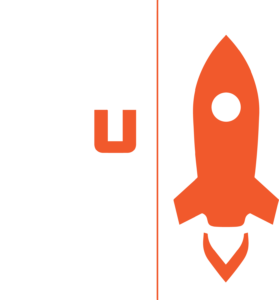Networking
A lot is made of this element of the job search but it’s not as hard as it seems. Take what you know, apply it with people you know, stretch it and you’ll find connections all over.
Everyone Has a Network
Your network is the web of people you have known and have known you over your lifetime. Not all of them are influential but those that are, are really important in this process.
Think about the people you’ve relied on for advice (parents, teachers, friends, advisors, etc), they will want to help you – let them.
If you have access to a college alumni network, use it. You have a shared history and those who sign up to the network, do so to stay connected and to help.
Reach out to these people/groups and tell them what you’re looking for.
A network can be more than just an individual connection, it can also be a connection to a product or a brand. If you are loyal to specific ones, start there. Write them a letter. Find someone who works there. Tell them about your interest. And if not that company, perhaps its largest competitor.
If your connection is to a business or an industry, connect the interest in that industry with your search. Learn about the functions of that job and why your skills, interests, passions lead in that direction.
Utilizing Online Resources
You have access to limitless information – dive in. Learn about careers through company websites, annual reports, industry blogs.
Find out which organizations are making headlines. Dig around and learn as much as you can.
Think about your own online presence and be aware of how you might come across to potential employers, particularly with regards to social media. Make sure your pictures and postings will not have a negative impact.
LinkedIn can give you access to company information and job listings. Use this information to your advantage.
LinkedIn is also a space where companies and recruiters try to identify potential employees, so make sure you are “searchable.” Make a profile and highlight your skills and accomplishments, incorporating appropriate keywords. This will make you easier to locate and will identify as a qualified candidate.
Think of your LinkedIn page as your online resume – so make sure it is current, complete, and free of spelling and grammar mistakes. Your page and your resume should correspond and work to deliver the same message.
Networking in Action
The goal of networking is making connections. An introduction can provide background information about a company or position. It can also get you a recommendation and insight about job openings or an employer or an industry. All of this information will help when you reach the interview stage.
Always be ready for your opportunity. Networking can happen anywhere, anytime, so be ready to answer questions about what you’re doing now and want to do next.
Have your pitch ready. It shouldn’t sound scripted, but you should know what you want to say about yourself and practice it. Be prepared to adjust the pitch depending on the individual or the situation.
When you get your shot, be sure you come away with something tangible – a name, a time, an idea, or an answer.
If your contact can’t help you directly, look for an indirect win. He/she might not be hiring, but could know someone who is.
While it is important to be prepared, recognizing an appropriate time to network is crucial.
If you are unsure about the situation, don’t be afraid to check in. Ask if there is a better time to talk, or how you might get in touch in the future.
Do This
We call it the Bubble Map exercise – and it’s a great way to identify and organize potential contacts:
Your network can be thought of in terms of bubbles, or categories of where / how you know people. These could include family, college, coworkers from a previous job, friends from growing up, etc. Write down the bubbles that apply to you.
Now, under each bubble heading, write down all the people you know from that realm that could be helpful to you. They can be your close contacts, acquaintances who have access to a field of interest, or even second degree connections. But jot down everyone who comes to mind.
The final step is to review the list of people you wrote down and categorize them as an A, B, or C.
An A is someone you can call on for anything. You know them well and are comfortable asking them for help. A’s are your close friends, your family, your mentors.
The B’s are more like an advisory group. They’re happy to help, but you won’t want to lean on them too hard. They’re not your A-team, but are useful resources worth cultivating relationships with.
C’s are influencers. You might not know them very well, but they carry influence in a field that’s relevant to you. They’re the ones you call on for occasional (but important) favors.
